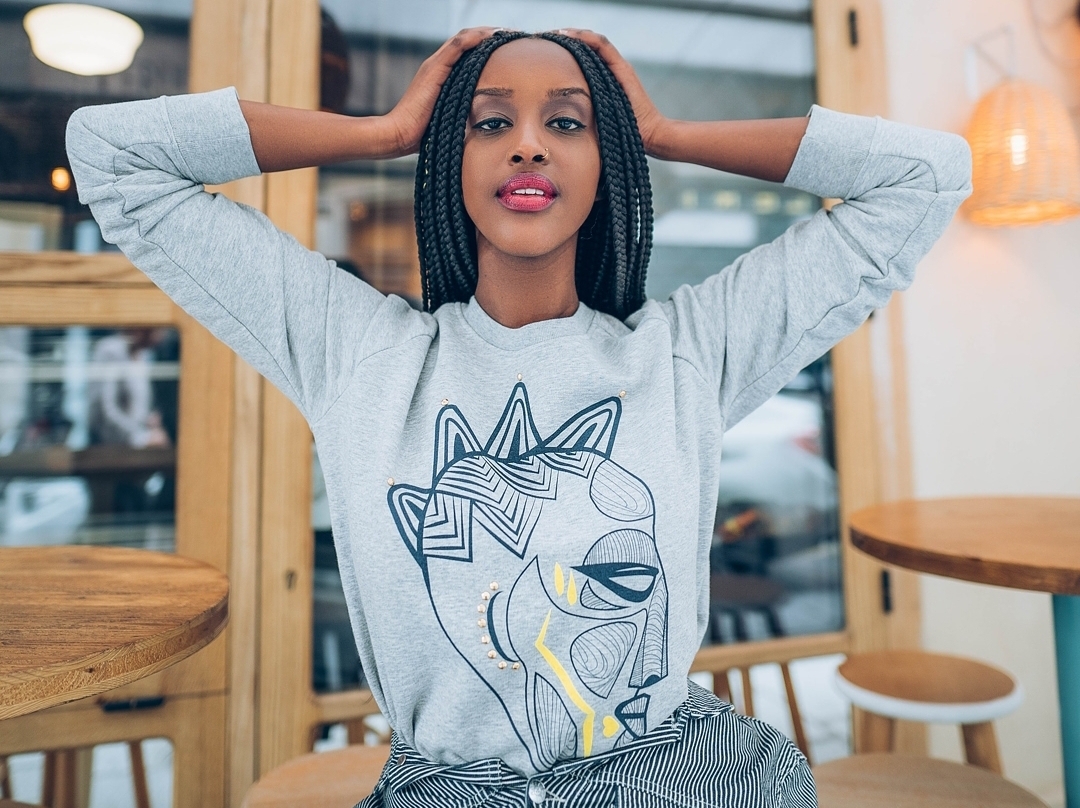The Best Fabrics to Look for in Branded Clothing for Summer
Comprehending Clothing: The Relevance of Material Selections in Your Closet
The selection of material in apparel plays a critical duty in both looks and performance. Various products supply varying levels of longevity, breathability, and convenience, directly affecting the user's experience. Understanding these subtleties can improve one's wardrobe markedly. Many overlook exactly how these selections can impact not just individual style, however additionally sustainability. What fabric choices could redefine your wardrobe and align it with both style and responsibility?
The Duty of Fabric in Fashion and Capability

Common Material Types and Their Attributes
When picking clothes, recognizing the qualities of common material types is necessary for making notified selections. Cotton, a widely-used all-natural fiber, is understood for its convenience, soft qualities, and breathability, making it suitable for informal wear and day-to-day garments. Linen, another all-natural choice, boasts excellent moisture-wicking residential properties and an unique structure, suitable for cozy climates.Wool, commonly preferred for its warmth and resilience, varies in excellence; merino wool is soft against the skin, while coarser kinds are made use of for outerwear. Artificial fabrics like polyester and nylon supply toughness and resistance to wrinkles, making them popular for activewear and travel garments. Finally, blends, which combine synthetic and natural fibers, can enhance performance while maintaining comfort. By identifying these material characteristics, individuals can select clothes that lines up with their way of living and aesthetic choices.
Breathability and Comfort: Choosing the Right Fabrics for Various Climates
Picking the ideal fabrics for different climates can considerably enhance comfort and general wearability. Breathable products are essential in warm environments, as they enable air circulation and wetness dissipation. Fabrics such as cotton, bed linen, and moisture-wicking synthetics efficiently attract sweat far from the body, maintaining the user cool and completely dry. On the other hand, in colder climates, thicker materials like wool or fleece supply insulation while keeping breathability, ensuring heat without overheating.Additionally, the choice of material weight plays an important function; lightweight materials are more effective for summer season, whereas much heavier options are suited for wintertime wear. Understanding the special buildings of each textile makes it possible for individuals to dress properly for varying climate condition. Ultimately, choosing comfy and breathable textiles customized to certain climates can considerably improve day-to-day convenience and boost the overall experience of putting on garments.
Durability and Care: Exactly How Fabric Influences Durability of Your Closet
Choosing the best products can greatly influence the sturdiness and care requirements of a closet. Fabrics such as cotton and polyester are recognized for their resilience and ease of maintenance, making them excellent for day-to-day wear. In comparison, delicate materials like silk and lace call for more careful handling and specialized cleaning techniques, which can boost the moment and effort needed for care. Branded Clothing.Durability is also influenced by the fabric's weave and finish; securely woven fabrics tend to withstand deterioration much better than loosely woven options. In addition, synthetic blends frequently offer improved toughness, integrating the very best qualities of numerous fibers.Understanding the treatment directions for each textile is essential, as inappropriate drying out or cleaning can cause premature wear. Ultimately, selecting resilient materials can cause a longer-lasting closet, lowering the frequency of replacements and contributing to a much more lasting style choice
The Influence of Textile on Fit and Silhouette

Lasting Textile Choices: Making Eco-Friendly Decisions
The effect of fabric expands beyond fit and silhouette to incorporate environmental aspects, triggering an expanding passion in sustainable fabric options. Environment-friendly materials, such as natural cotton, hemp, and Tencel, are acquiring grip amongst customers who prioritize sustainability in their wardrobes. go to this website These products are typically created with less chemicals and water, minimizing their environmental footprint.Additionally, recycled fabrics, made from post-consumer waste, offer a cutting-edge service to the fabric sector's contamination trouble. Brands progressively welcome transparency in their sourcing techniques, permitting consumers to make informed decisions regarding their purchases.Choosing sustainable materials not just supports moral methods yet additionally motivates the fashion business to adopt even more responsible production approaches. As understanding of ecological problems climbs, individuals are prompted to assess the long-lasting effect of their fabric options, promoting an activity in the direction of a more ecologically conscious and lasting approach to fashion.
Boosting Style: How Material Can Transform an Outfit
While numerous might concentrate on shade and cut when selecting an outfit, the option of material plays a necessary function in elevating style and boosting total look. Various materials communicate distinctive state of minds and messages; for instance, silk emanates deluxe and refinement, while denim uses a casual, relaxed ambiance. The texture and drape of a material can significantly modify the silhouette, with structured fabrics offering a refined appearance and softer ones creating an extra fluid, loosened up aesthetic.Moreover, the weight of the textile affects wearability across seasons. Lightweight fabrics like linen and cotton are ideal for summer season, while much heavier products such as wool and velvet supply heat and style in colder months. Understanding textile residential properties, such as breathability and stretch, likewise empowers individuals to make enlightened options that improve convenience without compromising design. Ultimately, the appropriate textile can transform an attire from normal to amazing, making it an important factor to consider in any kind of closet.
Frequently Asked Questions
Just how Do I Determine the Textile Web Content of My Clothes?
To determine textile web content, one can check out care tags, conduct melt examinations for fiber identification, or seek advice from fabric examples. These techniques aid set apart products, making certain educated choices for apparel care and site maintenance in day-to-day wear.
Can Fabric Selection Affect My Mood or Self-confidence?
Textile choice can considerably influence a person's state of mind and self-confidence. Branded Clothing. Specific products may stimulate feelings of comfort or sophistication, while others can really feel unflattering or limiting, ultimately affecting self-perception and psychological well-being throughout the day
What Fabrics Are Finest for Sensitive Skin?
For people with delicate skin, all-natural materials like cotton, bamboo, and linen are usually suggested. These products are breathable, hypoallergenic, and much less most likely to create irritation, making them ideal choices for comfort and skin wellness.
Just how Do I Correctly Wash and Take Care Of Different Fabrics?
To effectively care and wash for different textiles, important link one have to think about each material's specific requirements, consisting of temperature setups, detergents, and drying techniques, making certain long life and keeping the textile's initial high qualities for perfect use.
Are There Details Fabrics for Athletic or Efficiency Use?
Sports or efficiency wear usually makes use of textiles such as spandex, nylon, and polyester. These materials are created for moisture-wicking, breathability, and versatility, boosting motion and convenience throughout exercises while giving longevity and assistance. On the other hand, in colder climates, thicker textiles like woollen or fleece supply insulation while retaining breathability, making certain heat without overheating.Additionally, the choice of fabric weight plays an essential function; lightweight materials are more effective for summer season, whereas larger choices are suited for winter wear. In comparison, fragile products like silk and shoelace call for more cautious handling and specialized cleansing approaches, which can enhance the time and effort required for care.Durability is also affected by the fabric's weave and surface; snugly woven textiles tend to resist wear and tear far better than loosely woven choices. In contrast, rigid fabrics can limit activity but provide a classic, refined look.Moreover, the thickness and structure of the fabric can affect the aesthetic perception of body shape. The impact of material expands beyond fit and shape to include ecological factors, triggering a growing passion in lasting fabric choices. The appearance and drape of a fabric can dramatically change the shape, with organized materials offering a refined appearance and softer ones creating a much more fluid, kicked back aesthetic.Moreover, the weight of the textile affects wearability throughout seasons.